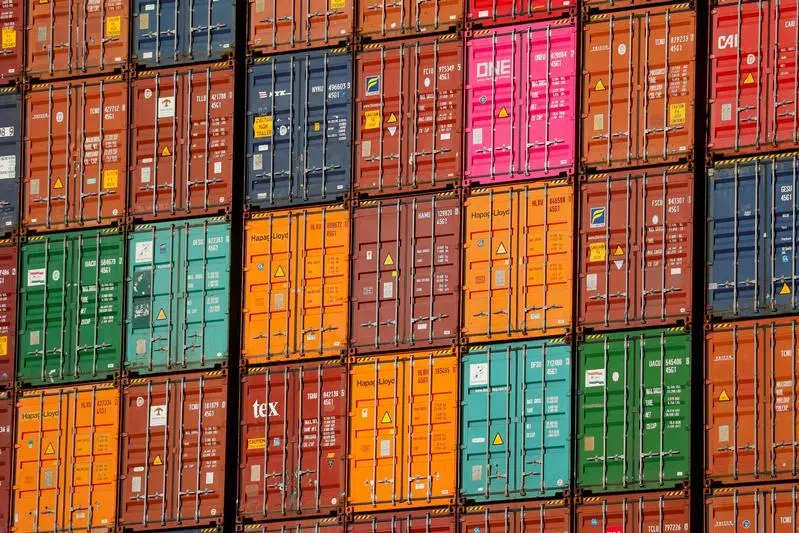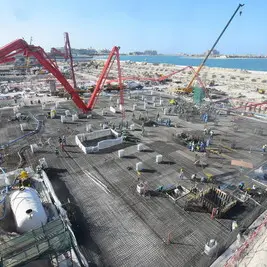PHOTO
LONDON- The deadline for the United States and China to reach a trade deal before U.S. tariffs increase on $200 billion worth of Chinese imports (scheduled for March 2) is the most important date in the calendar for oil traders.
The deadline will probably have more impact than the next OPEC+ joint ministerial monitoring committee (March 18), OPEC’s extraordinary meeting (April 17-18) or even the White House review of Iran sanctions waivers (May 4).
The outcome of trade talks will have a decisive influence on the oil consumption outlook for the rest of the year since the threat of tariffs and associated uncertainty are proving the largest drag on global economic growth.
Because the trade deadline comes first, the outturn will shape the subsequent strategic choices made by OPEC and its allies over oil production and the White House on how far to toughen Iran sanctions.
STALLING GROWTH
Uncertainty about the outlook for global trade has already pushed the world economy close to the brink of recession, judging by a range of business surveys and statistics on trade volumes.
China’s manufacturers reported a fall in business activity in December and January, and the official purchasing managers’ index has fallen to its lowest level for three years.
Global manufacturers have reported declining export orders for five months now, according to the new export orders component of the JPMorgan Global PMI, with new business falling at the fastest rate since 2016.
Freight flows through Hong Kong International Airport, the world’s busiest air cargo hub, are also falling at the fastest rate since 2016, according to government statistics.
The only significant exception to the global slowdown has been the United States itself, where manufacturers report a continued widespread upturn, albeit more slowly than the frenzied rates in late 2017 and early 2018.
In the rest of the world, the slowdown has taken a toll on current and prospective oil consumption growth, pushing the global market towards surplus and causing prices to fall sharply in the fourth quarter.
The biggest impact of the slowdown is being felt in the consumption of middle distillates such as diesel and jet fuel used in trucking, shipping, railroads and airlines as well as by manufacturers, miners and farmers.
Given distillate’s predominant use in freight transport and industry, distillate consumption and prices have been closely correlated with the business cycle at U.S. and global levels in the last 50 years.
If the economy slides into an extended slowdown, or worse an outright recession, distillate prices will come under renewed pressure and take crude prices down with them.
DEAL OR NO DEAL
The global economy has been battered by a series of negative shocks in the last six to 12 months, including the stalled Brexit negotiations, rising U.S. interest rates, an appreciating U.S. dollar, and sharp falls in world equity markets.
But the largest source of uncertainty stems from the deteriorating trading relationship between the United States and China, which is spilling over to both countries’ trading networks.
The resolution of U.S.-China tensions will therefore have more impact on the global economic outlook and oil consumption than any other single factor in 2019. Of all possible outcomes, four are the most likely:
(1) Comprehensive agreement settling all or nearly all outstanding issues between the two countries;
(2) Limited agreement settling some issues but leaving more difficult items to be dealt with later (risking recurrent tensions);
(3) No deal but with an agreement to postpone the tariff deadline while the two sides continue negotiating (risking recurrent tensions);
(4) No deal, with an immediate imposition of U.S. tariffs on China’s exports.
A comprehensive agreement on all issues would be the most positive result and could lead to a major boost in business confidence, but because some issues are so difficult, it is also probably the least likely of those four possible outcomes.
At the other end of the spectrum, no deal and immediate imposition of tariffs would be the most negative outcome and the resulting shock to confidence and markets would make a recession very likely.
The risks of no deal give policymakers in China and the United States a powerful incentive to compromise – provided they can save face and present any accord in a favourable light to domestic audiences.
The intermediate outcomes of a limited accord or continued negotiations would avoid the worst recession risks but do little to rekindle business confidence, so have little impact on the trajectory of the economy.
OPEC+ IMPLICATIONS
Comprehensive agreement is obviously more positive for oil consumption, while no deal would pose the greatest risk for oil demand.
Comprehensive agreement would allow the Organization of the Petroleum Exporting Countries and its allies to contemplate relaxing their output curbs but might make the White House hesitate about toughening sanctions on Iran.
By contrast, no deal would probably force OPEC and its allies to consider even deeper production cuts but also give the White House more scope to reduce or eliminate sanctions waivers for Iran’s crude customers.
OPEC and its allies will need a clear idea of the White House’s approach to Iran before they make any decision about adjusting output to avoid repeating the miscommunication that dogged the last U.S. sanctions deadline in October-November 2018.
The White House will therefore come under pressure to make its position on Iran sanctions clear before the OPEC+ meeting in mid-April to avoid further oil price volatility.
CARACAS CONUNDRUM
The imposition of U.S. sanctions on Venezuela’s state-owned oil company PDVSA to deny financial support to the Maduro government and force a transfer of power to the opposition has further complicated the outlook.
The scope of the sanctions remains unclear (intentionally) but they appear to include primary sanctions on U.S. buyers of Venezuelan oil and secondary sanctions on third-country firms doing business with PDVSA.
If the sanctions are sustained for any length of time, they will probably remove several hundred thousand barrels per day of crude from the global market, which would tighten the production-consumption balance significantly.
But the lack of much price response so far suggests most traders expect the showdown between the United States and the Maduro government to be resolved relatively quickly.
The abrupt and aggressive escalation of the crisis has engaged the full political and diplomatic credibility of the White House and the United States in forcing a swift transition of power.
The United States has pushed the crisis so far it would be very difficult to back down now and allow the Maduro government to remain in place.
Most traders seem to be betting the standoff will end quickly with the replacement of the Maduro administration and a resumption of Venezuela’s exports (or alternatively exports will be allowed to resume to third countries).
If the standoff lasts longer and third-country exports remain sanctioned, crude prices will eventually have to rise unless OPEC makes up the difference.
While Venezuela remains an immediate concern, the outlook for oil prices in the rest of the year will be dominated by what happens in trade talks between the United States and China in the next three weeks.
(Editing by Dale Hudson) ((john.kemp@thomsonreuters.com and on twitter @JKempEnergy))











